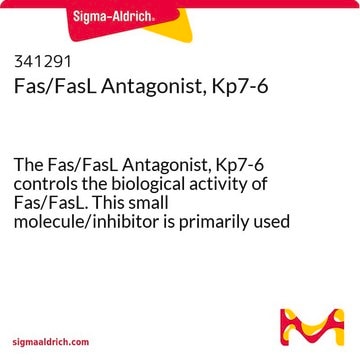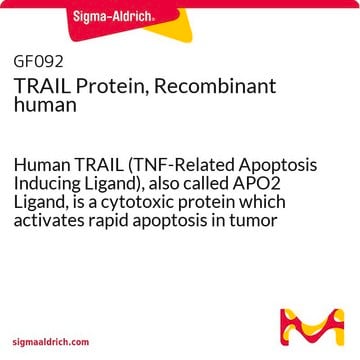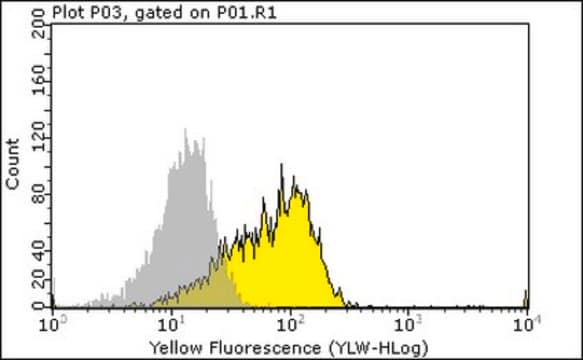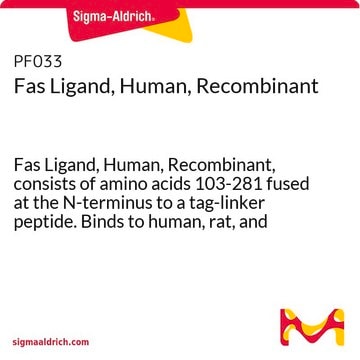05-338
Anti-Fas Antibody
UPSTATE®, mouse monoclonal, ZB4
Synonim(y):
APO-1 cell surface antigen, Apo-1 antigen, Apoptosis-mediating surface antigen FAS, CD95 antigen, FASLG receptor, Fas (TNF receptor superfamily, member 6), Fas AMA, Fas antigen, apoptosis antigen 1, tumor necrosis factor receptor superfamily member 6, tu
Wybierz wielkość
About This Item
Polecane produkty
Nazwa produktu
Anti-Fas Antibody (human, neutralizing), clone ZB4, clone ZB4, Upstate®, from mouse
pochodzenie biologiczne
mouse
Poziom jakości
forma przeciwciała
purified immunoglobulin
rodzaj przeciwciała
primary antibodies
klon
ZB4, monoclonal
reaktywność gatunkowa
human
producent / nazwa handlowa
Upstate®
metody
flow cytometry: suitable
neutralization: suitable
western blot: suitable
izotyp
IgG1
numer dostępu NCBI
numer dostępu UniProt
Warunki transportu
dry ice
docelowa modyfikacja potranslacyjna
unmodified
informacje o genach
human ... FAS(355)
Opis ogólny
Specyficzność
Immunogen
Zastosowanie
Apoptosis & Cancer
Apoptosis - Additional
Jakość
Neutralization: 10-500 ng/mL of this antibody was incubated for one hour with human Fas-transfected cells and inhibited the anti-Fas (human, activating), clone CH11 (Catalog # 05-201). Cell viability was assessed using a WST-1 assay
Opis wartości docelowych
Postać fizyczna
Przechowywanie i stabilność
Komentarz do analizy
Various human cells
Inne uwagi
Informacje prawne
Oświadczenie o zrzeczeniu się odpowiedzialności
Nie możesz znaleźć właściwego produktu?
Wypróbuj nasz Narzędzie selektora produktów.
Kod klasy składowania
10 - Combustible liquids
Klasa zagrożenia wodnego (WGK)
WGK 2
Certyfikaty analizy (CoA)
Poszukaj Certyfikaty analizy (CoA), wpisując numer partii/serii produktów. Numery serii i partii można znaleźć na etykiecie produktu po słowach „seria” lub „partia”.
Masz już ten produkt?
Dokumenty związane z niedawno zakupionymi produktami zostały zamieszczone w Bibliotece dokumentów.
Active Filters
Nasz zespół naukowców ma doświadczenie we wszystkich obszarach badań, w tym w naukach przyrodniczych, materiałoznawstwie, syntezie chemicznej, chromatografii, analityce i wielu innych dziedzinach.
Skontaktuj się z zespołem ds. pomocy technicznej








